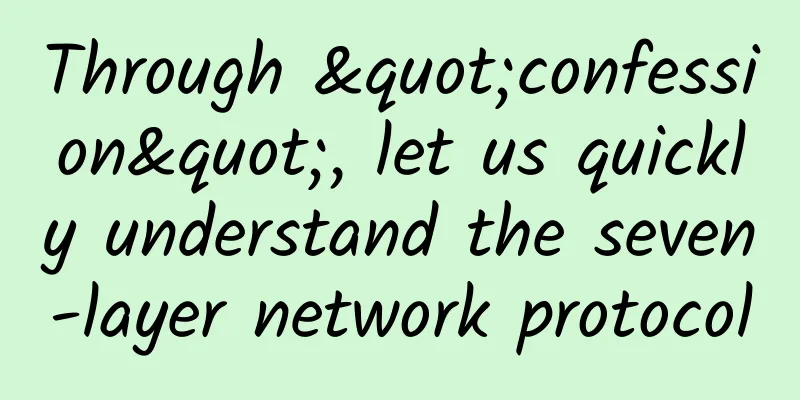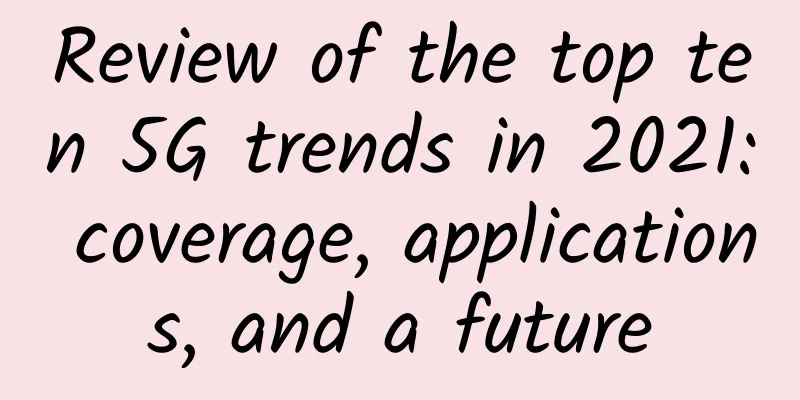Education takes off with 5G smart technology

|
Education is the foundation of a country, and 5G network is the cornerstone of smart education. To promote the deep integration of the new generation of information and communication technology with the education industry, the information and communication industry has frequently come up with "big moves". In September this year, the Ministry of Industry and Information Technology and the Ministry of Education jointly issued the "Notice on Organizing the Application of "5G + Smart Education" Application Pilot Projects" to help the high-quality development of education; in November, the general offices of the two ministries issued the "Notice on Improving the Network Management and Service Quality of Colleges and Universities" to promote the in-depth application of 5G technology on campus, accelerate the deployment and optimization of 5G networks, and encourage colleges and universities to deeply integrate new technologies such as 5G with education and teaching. Basic telecommunications operators have leveraged their information empowerment advantages to create a large number of smart applications represented by distance education and interactive classrooms. Today, the "three horses" of digitalization, networking, and intelligence have driven the education industry to embark on a new journey of digital intelligence. 5G breaks through the limitations of traditional teaching and adds smart wings to the classroomSince the full commercialization of 5G, new-generation information and communication technologies such as artificial intelligence, big data, cloud computing, the Internet of Things, and virtual reality have been comprehensively applied, bringing great changes to education and giving the classroom "smart" wings. "I saw a monkey!" a primary school student said excitedly in an English class. This happened in an English class at Guangzhou Shamian Primary School. When the teacher talked about "monkey", the students saw a vivid monkey through the MR glasses they were wearing. This English class also connected Bijie, Guizhou, thousands of miles away, allowing students from both places to take the same class. At present, the development of 5G has entered the "fast lane". With the introduction of technologies such as artificial intelligence and virtual reality into campuses, traditional classrooms are also constantly transforming into smart classrooms. More and more teaching scenarios are integrating the results of digital technology and presented to students through teachers' rich teaching methods. The immersive teaching process is full of fun and technology. In the 5G holographic classroom in Boao Town, Hainan, Mr. Tan, a physics teacher at Wenchang Middle School, remotely explained aerospace knowledge through 5G+ holographic projection. He was like being in the classroom in Boao Town. In addition to face-to-face explanations, he also "transformed" realistic model props from time to time and carried out analysis in the air... The 5G+ holographic projection used by Mr. Tan is a new generation of remote interactive teaching system created by China Unicom. Based on the characteristics of 5G, China Unicom integrates the latest holographic projection technology to enrich the visual presentation effect, making traditional remote interactive teaching more realistic "face-to-face with real people", making various demonstration pictures and model props more three-dimensional and vivid, bringing teachers and students a refreshing sense of technology and immersive classroom experience. As a key national basic network operator and the main force in the construction of Digital China, China Mobile is also actively exploring the application innovation of 5G+ smart education. In Hangzhou Times Primary School, the 5G+ VR classroom created by China Mobile can realize the learning of courses such as scientific experiments. Students can explore knowledge in the virtual reality world and enjoy an immersive learning experience; relying on China Mobile's 5G+ AI technology, in the Chinese language classroom of Guangzhou Sports East Road Primary School, students record videos on the AI interactive learning platform, and after submitting the videos, they can generate comments through AI analysis; the "5G Smart Cloud Examination Room" remote examination product innovatively created by China Mobile, by integrating 5G network and cloud technology capabilities, uses the new "online + offline" integrated examination model to achieve efficient and convenient remote examinations. 5G+ remote live broadcast breaks geographical restrictions and realizes the sharing of educational resources; 5G+MR multi-person collaborative teaching achieves a learning effect that transcends virtual and real space... The technologically advanced smart classroom has derived a diversified new education model, making education more digital, networked, intelligent and multimedia. With the continuous enrichment of the form of smart classroom, it has not only broken the limitations of traditional teaching models, but also truly sunk education and teaching, realized student-centeredness, and given students more space for independent learning, turning the classroom into a "wisdom feast" that gathers visualization, scenario, immersion and interaction. 5G breaks down barriers for students in mountainous areas to study and promotes balanced education with technologyDuring the pandemic, distance education has become an indispensable teaching method. However, in remote rural areas, due to the backward local network infrastructure and the lack of "Qualcomm" conditions, students lack a high-speed and stable network environment, making it difficult to get a high-quality distance learning experience, and teachers lack reliable broadband access, which directly affects the quality of teaching. "Information barriers" have widened the gap between rural and urban education, and this digital divide urgently needs an effective solution. The mission of 5G is to solve these problems from the root. With 5G, high-quality educational resources can be directly delivered to schools in remote areas. The smooth 5G transmission speed allows teachers and students to interact instantly and enhance teaching effectiveness. 5G remote classrooms also alleviate the pressure of insufficient teacher resources to a certain extent. Through remote training of rural teachers, empowering the construction of rural teacher teams with the help of 5G technology, and using technology to promote balanced education, children in the mountains can also enjoy modern education. In order to narrow the digital divide and accelerate the pace of rural network construction, the Ministry of Industry and Information Technology recently issued the "14th Five-Year Plan for the Development of the Information and Communication Industry", proposing to implement a new round of universal telecommunications service projects, increase support for broadband network upgrades in rural areas, old revolutionary areas, ethnic areas, border areas, poverty-stricken areas, especially in key counties for national rural revitalization, and achieve a 5G accessibility rate of 80% in administrative villages by 2025. As network coverage continues to increase, how to use the advantages of 5G to promote balanced urban and rural education and improve the level of rural education informatization? Many universities have explored a set of replicable and popularizable solutions through independent innovation. College students have always been an important force in carrying out science education, but due to geographical distance and academic constraints, they can only conduct short-term teaching, and cannot achieve normalized and high-frequency science education, which greatly reduces the effect. In response to this pain point, Northwestern Polytechnical University launched the "5G + Remote Education" education precision poverty alleviation practice activity, through the Internet remote teaching to the school's designated poverty alleviation areas and teaching areas to conduct multiple remote science education on different topics, effectively combining the teaching content with the personalized needs of children far away in remote mountainous areas, so that the school's knowledge and intellectual resources can be more efficiently connected with poor mountainous areas. At the same time, using the characteristics of 5G communication technology, high-quality teaching resources will be shared nationwide to bring knowledge to more children in the mountains. Southeast University's "Cloud Science Bridge" teaching activity aims to broaden the scientific horizons, cultivate scientific interests, and improve scientific literacy for students in the central and western regions. It opens interactive science classes through a combination of online and offline teaching methods, and opens a "Cloud Science Lecture Hall", regularly inviting professors and teachers from various colleges to give online science lectures to students. In addition to thematic lectures and science classes, the school has also created a cloud parallel space, which allows students in the teaching area to experience a 360-degree immersive experience of cloud travel in Southeast University from a first-person perspective through VR high-definition video interactive technology in 5G scenarios, connecting mountains and dreams with the "Science Bridge". 5G technology interconnection has not only broken the spatial barriers of rural education, but also enabled the sharing of high-quality educational resources to a wider area, making the dream of balanced education a reality. 5G+AI, 5G+VR, 5G holographic projection and other technologies are combined with courses. The entertaining teaching experience not only shortens the distance between rural students and teachers, but also helps to improve classroom integration and stimulate their enthusiasm for learning, so that the mountains will no longer block the dream of learning. This is the significance of 5G empowering rural education. 5G builds a solid campus security line and uses technology to protect the safety of teachers and students5G has entered campuses, and the application of information technology has greatly enriched teaching methods, making learning easy and interesting; distance education has promoted the equal distribution of educational resources, allowing children in mountainous areas to be in the classrooms of famous teachers. In terms of campus safety, the safety problems that have long plagued school teachers, students and parents have also been solved with the arrival of 5G. Among the wide variety of campus security applications, the performance of 5G and AI is the most anticipated. With the help of the 5G + MEC (edge computing) + AI security architecture, after basic processing in the edge cloud, videos and data from various areas on campus will help AI to conduct deep learning, making the analysis capabilities smarter and more accurate. The aggregated security data can also further help schools determine the flow of people and high-risk areas on campus, and formulate more scientific security defense plans. The use of AI technology can greatly alleviate the pressure of patrolling on campus, and devote more manpower to incident handling and daily management. At present, AI technology can realize warning behaviors including: chasing and fighting, breaking into, fence detection, leaving the post, suspicious stay, gathering, and screen blocking. For areas prone to safety accidents such as offices, finance rooms, rooftops, computer rooms/weak current wells, canteen kitchens, walls, lake/river guardrails, corridors, building perimeters, remote corners, etc., 5G+AI can automatically identify and warn abnormal behaviors around the clock and at all times. For example, the 5G+ smart campus entry and exit solution created by China Mobile and Shandong Will Data has achieved linkage with the public security department. The intelligent facial recognition terminal conducts real-time monitoring of strangers loitering at the school gate, and pushes the monitoring results to the school and the education committee's security management office in real time by comparing the dangerous personnel and fugitive information database of the public security system. At the same time, an early warning is sent to the public security system platform, providing multiple guarantees for campus safety management. At present, the epidemic prevention and control situation is still severe, and 5G smart applications have woven an invisible protective net between students and the virus. At Shanghai City Science and Technology School, China Unicom's facial access control and temperature measurement system measures the temperature of student dormitories for epidemic prevention and control, and students enter and exit the dormitory twice a day to automatically measure their temperature and keep a record. At the Affiliated High School of Jiangxi Normal University, China Unicom has deployed a "5G + AI infrared temperature measurement + mask recognition" smart access control system, which can quickly and accurately identify people in just one second, even if they are wearing masks and goggles, and there will be no queues during peak hours. Popularizing safety knowledge and improving students' safety awareness are important parts of building a safe campus. In Sichuan, China Telecom leverages the capabilities of "Magic Mirror Smart Eyes" to provide all-round services for the campus security emergency command of the Sichuan Provincial Department of Education, accessing 27,000 video sources, covering 21 cities and prefectures, serving 2,750 schools, and reaching 1.3 million students. On May 12 this year, the No. 1 Primary School of Wenchuan County staged an earthquake prevention and disaster reduction emergency drill. Through a real simulation of the sudden earthquake near Weizhou Town, Wenchuan County, the No. 1 Primary School of Wenchuan County responded to the risk assessment, warning release, emergency disposal and comments, and improved the ability of teachers and students to resist and respond to emergency incidents. In this earthquake prevention and disaster reduction emergency drill, the Magic Mirror platform played the role of commanding evacuation. The wide-connectivity, low-latency, and large-bandwidth 5G network has greatly improved the level of information infrastructure in the education industry. Campus security management has made the leap from human defense to technical defense. The new generation of information and communication technologies represented by 5G, AI, and big data are entering more and more campuses, making teachers less worried, parents more reassured, and students more at ease. 5G education has a long way to goAlthough 5G brings many benefits, it will take some time to fully enjoy these benefits. 5G will change the way education is delivered over the next decade. It is critical that educators recognize that 5G is not a one-size-fits-all solution. The education industry should consider carefully and exercise caution in choosing appropriate uses for 5G. Application scenarios and purposes must be the primary considerations so that students can benefit from 5G technology to the maximum extent possible. It is important to understand how 5G technology works in specific environments and to use it in a way that meets the needs of students. For example, 5G may not be necessary for students to play a pre-recorded lecture video that does not require high-definition video. Instead, 5G is best used to simulate an immersive learning environment where dispersed students can collaborate with each other. In addition, educators who teach tactile and skill-based courses can also take advantage of the virtual reality (VR) and augmented reality (AR) capabilities that are widely accessible in the context of 5G. For some educators, such capabilities may be less important than the need to connect hundreds or thousands of students in real time. In this case, 5G can be used to make such virtual encounters streamlined and seamless. More importantly, efforts should be made to ensure that students have digital skills so that they can use and benefit from 5G-enabled educational services. Prior to this, the increase in the types and number of communication tools has opened the door to data leakage: as more tools are connected to the 5G communication network, the probability of these tools being hacked will increase. Security is always the first thing that should be considered carefully. In addition, according to the "5G+ Smart Education Typical Application Scenarios White Paper" released by China Unicom in 2019, the four typical application scenarios of 5G+ smart education are: 5G+ virtual reality education, 5G+ remote interactive teaching, 5G+ artificial intelligence education and 5G+ campus smart management. It must be recognized that the above application scenarios are still in the stage of practical exploration and cannot fully utilize the technical advantages of 5G to meet the diverse application scenario needs of teachers and students. Since online teaching is separated from the connection of space, the emotional communication barriers between teachers and students will also affect the teaching quality. In traditional classrooms, teachers standing on the podium have comprehensive control over the classroom and communicate with students in real time and directly. But when the classroom is moved online, the original direct connection will be cut off. The classroom has become a dry knowledge sharing, and the emotional connection between people has been weakened. There is a considerable shortage of professionals who can integrate 5G technology into teaching. At present, the country is accelerating the promotion of the 5G strategy, the 5G industry is ready to go, and the 5G application is accelerating, which further highlights the shortage of 5G professionals. Among them, the skills training of primary and secondary school teachers is the most prominent. As the main place for implementing compulsory education, primary and secondary schools are not only large in number and wide in scope, but also cover the largest number of students. The acceptance of new technologies in primary and secondary schools directly affects the effects of future high school and university stages. The influence of teachers is the most critical, and the training of teachers is also extremely important. |
<<: DeepMind Nature published: AI achieved major progress in mathematics for the first time
>>: Understanding Deterministic Networks in Seconds: Playing with Queues (Part 2)
Recommend
5G standard draft released: it’s not just the speed that changes
The Mobile World Congress, the most influential a...
Empowering IDC infrastructure, can 5G achieve data transmission at the speed of light?
The fifth generation of cellular networks is gett...
It has been difficult for virtual operators to become legal operators in three years, and telecommunications fraud has become a stumbling block
[[180649]] The long-delayed official mobile resal...
Is it OK to leave the router on for a long time? Is there any harm if I don't turn it off?
Some people say that WIFI is the vitamin of the I...
Huawei fully opens HMS and calls on more developers to join the new all-scenario smart ecosystem
[51CTO.com original article] The 2019 Huawei Deve...
China Unicom and Huawei jointly launch innovation to build differentiated advantages in 5G-A
[Barcelona, Spain, February 26, 2024] Huawei an...
How to build a strong network during the COVID-19 pandemic?
[[343306]] Maintaining a resilient network with m...
The long-awaited 5G messaging trial will be launched in late October or early November
"China Unicom and China Telecom are working ...
Maxthon Hosting: 56 yuan/month Hong Kong CN2-2GB/40G SSD/300GB/15M Bandwidth
Aoyo Zhuji is one of the foreign hosting services...
Application and standardization status of IPv6 technology in ubiquitous network perception extension layer
1. Basic concepts of ubiquitous network Ubiquitou...
Changchun Municipal Government Signs Strategic Cooperation Agreement with Huawei Cloud Computing Data Center
On the afternoon of March 31, the Changchun Munic...
5G can be unleashed through chip innovation
The arrival of 5G has brought with it an unpreced...
Ministry of Industry and Information Technology: 5G users account for more than 30% of my country's total
On October 26, the Ministry of Industry and Infor...
Maxthon Host: Hong Kong CN2 restocks in large quantities, 2G memory package monthly payment starts from 56 yuan
Aoyo Zhuji is currently restocking a large number...
The arrival of 5G will trigger a larger-scale patent war, and the market size is expected to grow 120 times
Automakers are battling in court with Qualcomm, N...









